Ever scratched your head wondering, “Is Douglas Fir a hardwood?” Let’s dive into this intriguing question and unravel the woodsy mystery together! Ready for a timber adventure?

Douglas Fir is primarily used for plywood, lumber, flooring, and a variety of other woodworking projects.
When I was working on a heavy-duty woodworking project using Douglas Fir, I became curious about its hardness.
So, I sought the advice of experts to gather information about the hardness factor of Douglas Fir and managed to compile some useful information.

Now, after several years of experience working with Douglas Fir, here’s what I’ve learned: Is Douglas Fir a hardwood?
No, Douglas Fir is not a hardwood. Douglas Fir is a softwood with Janka hardness rating of 710 lbf (3,158 N) which is relatively lower than most wood. Douglas Fir comes from a coniferous tree like other softwoods that doesn’t lose leaves in fall.
But that’s just a quick snapshot.
So, in this article, I’ll explore is Douglas Fir a hardwood and how hard is Douglas Fir by taking its characteristic features, pros, and cons.
Plus, I’ll talk about how strong Douglas Fir is.
Furthermore, I’ll answer some frequently asked questions as well.
So, let’s jump in!

First, let’s get a quick overview of what is Douglas Fir wood.
What is Douglas Fir Wood?
Douglas Fir wood, commonly known simply as Doug-fir, is a type of softwood that is native to western North America and eastern Asia.
Its scientific name is Pseudotsuga menziesii.
Named after the Scottish botanist David Douglas, it belongs to a unique genus named Pseudotsuga, distinguishing it from true firs of the Abies genus.
This majestic tree, reaching heights of 200-250 feet and trunk diameters of 5-6 feet, is not only an impressive sight in the wild, but it’s also a powerhouse in the lumber industry.
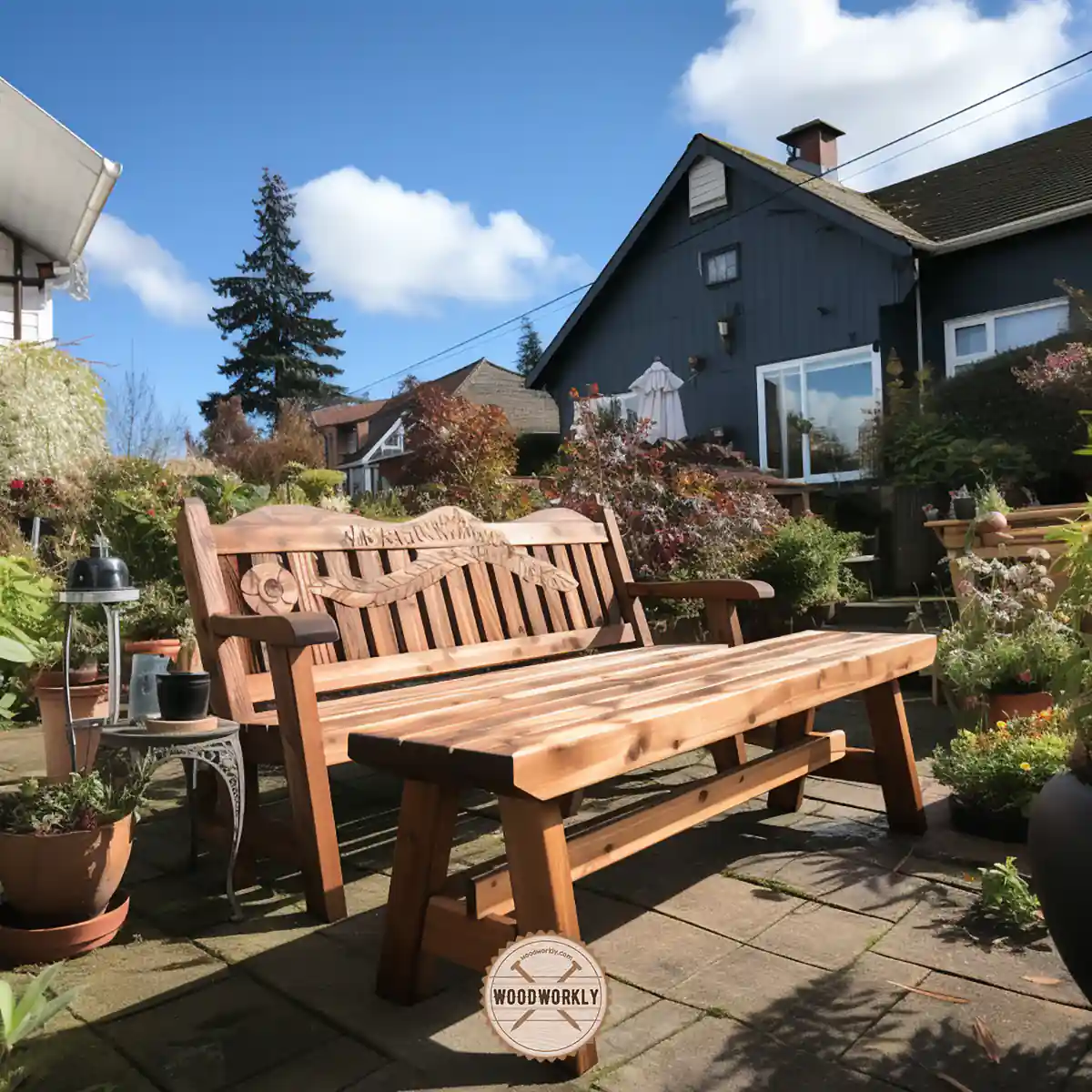
Douglas Fir Versatility as a Softwood
While it’s classified as a softwood, the Douglas Fir is known for its surprising strength and durability.
Despite its classification, Douglas Fir is among the hardest and heaviest softwoods commercially available in North America, which leads to a common misconception that it might be a hardwood.
It scores impressively on the Janka Hardness Scale, rating a solid 660, putting it in the middle of softwood ratings, higher than larch, chestnut, and hemlock.
This robustness comes from its straight grain and dimensional stability, both of which contribute to its suitability for a wide variety of applications.
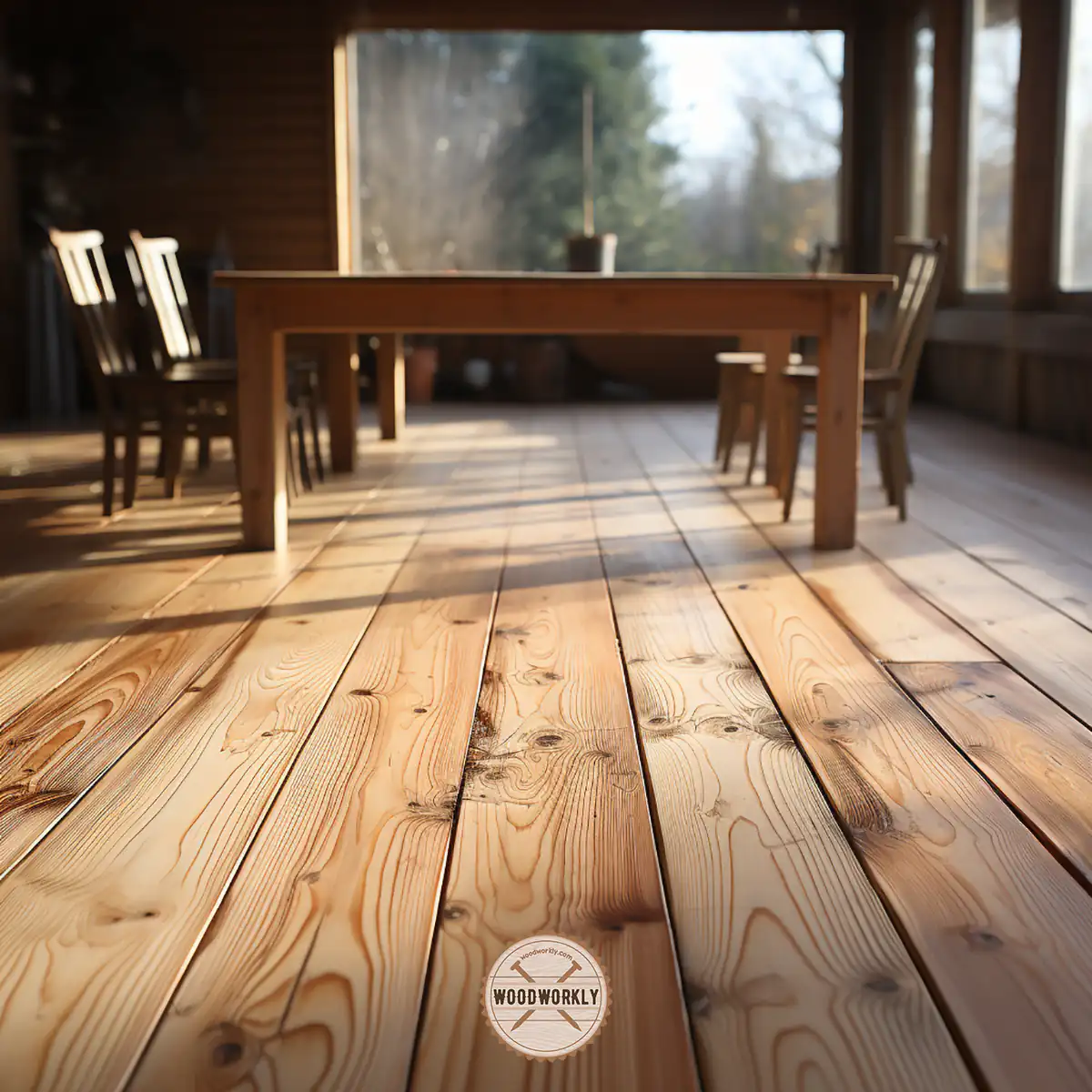
Douglas Fir Aesthetics and Texture
Aesthetically, Douglas Fir wood is appealing for its light brown color, with a hint of red and/or yellow, becoming darker with age.
When quartersawn, the wood typically shows a straight and plain grain, while flatsawn pieces or rotary-sliced veneers can exhibit more wild grain patterns.
This versatility in appearance allows it to fit into many different style schemes, from rustic to contemporary.
Resistance and Longevity
In terms of rot resistance, Douglas Fir is notable, especially when it comes to its heartwood.
The heartwood, the older, harder central portion of the tree, is particularly resistant to decay, making it an ideal choice for uses that require durability and longevity.
The wood has a medium to coarse texture and possesses a moderate natural luster, adding to its charm.
Douglas Fir: An Aromatic Experience
For those who appreciate the sensory aspect of wood, Douglas Fir does not disappoint.
When worked on, it emits a distinct, resinous odor that many find pleasantly reminiscent of the great outdoors.
However, it’s essential to maintain good ventilation when working with it, as the smell can be overwhelming for some people.
Sustainability and Availability
As for its sustainability and availability, Douglas Fir is widely available as construction lumber at modest prices.
Being reported by the IUCN as being a species of least concern, it is a good choice for those who want to make environmentally conscious decisions.
Old-growth or reclaimed boards can be more expensive, but these often offer unique aesthetic appeals and sometimes greater durability.
Now you have a good understanding of what kind of wood Douglas fir is, so, let’s talk about its hardness factor which is the highlighted point.
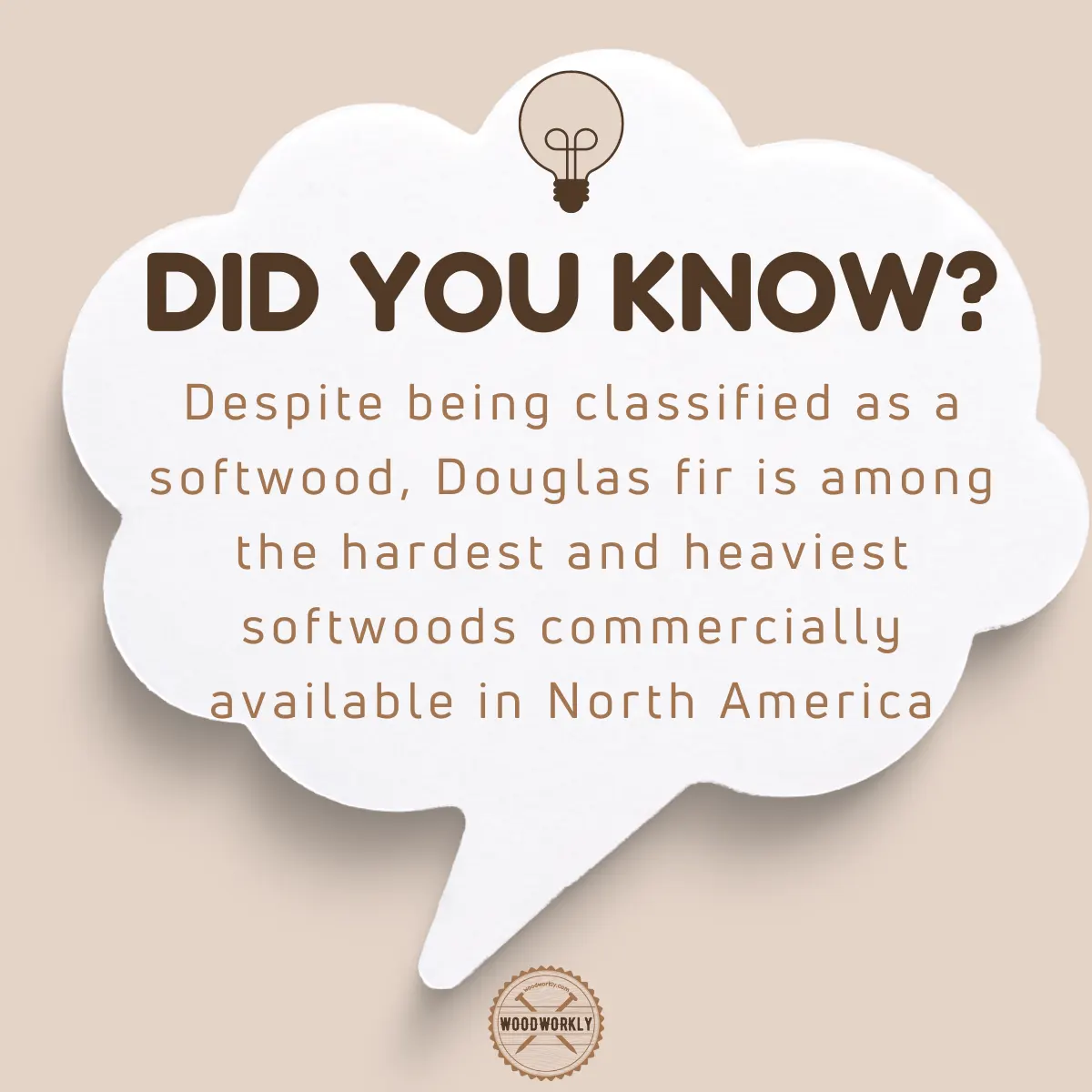
How Hard Is Douglas Fir?
Douglas Fir is a softwood. It is softer than most of the hardwoods and some softwoods as well.
According to the Janka hardness ratings, Douglas Fir has a hardness rating of 710 lbf (3,158 N) which is relatively lower than most woods.
Even though Douglas Fir is considered a softwood it is harder than some angiosperm woods like Chestnut.
It has good durability as well. Therefore, there’re some occasions Douglas Fir can be used as an alternative wood for some hardwoods.
Because of having superior hardness, especially when compared to other softwoods, Douglas Fir is perfect for structural beams.
It has good dimensional stability as well.
Because being a softwood, Douglas Fir comes has needle-like leaves and seeds are in cones. They don’t have vessels like hardwoods and are considered nonporous woods.
Conductions take place by tracheid and transportation of water is very low because of having needle-like leaves.
Softwoods like Douglas Fir are readily available and popular because of their versatility and strength.
So, let’s have. A look at the hardness of Douglas Fir compared to other wood types.
Janka hardness test is a standard method of measuring how hard a particular wood is by measuring its resistance against wear and dent.
If the wood has high resistance against wear and tear, it has a high score in Janka hardness ratings.
According to the Janka hardness ratings, Douglas Fir has a hardness rating of 710 lbf (3,158 N).
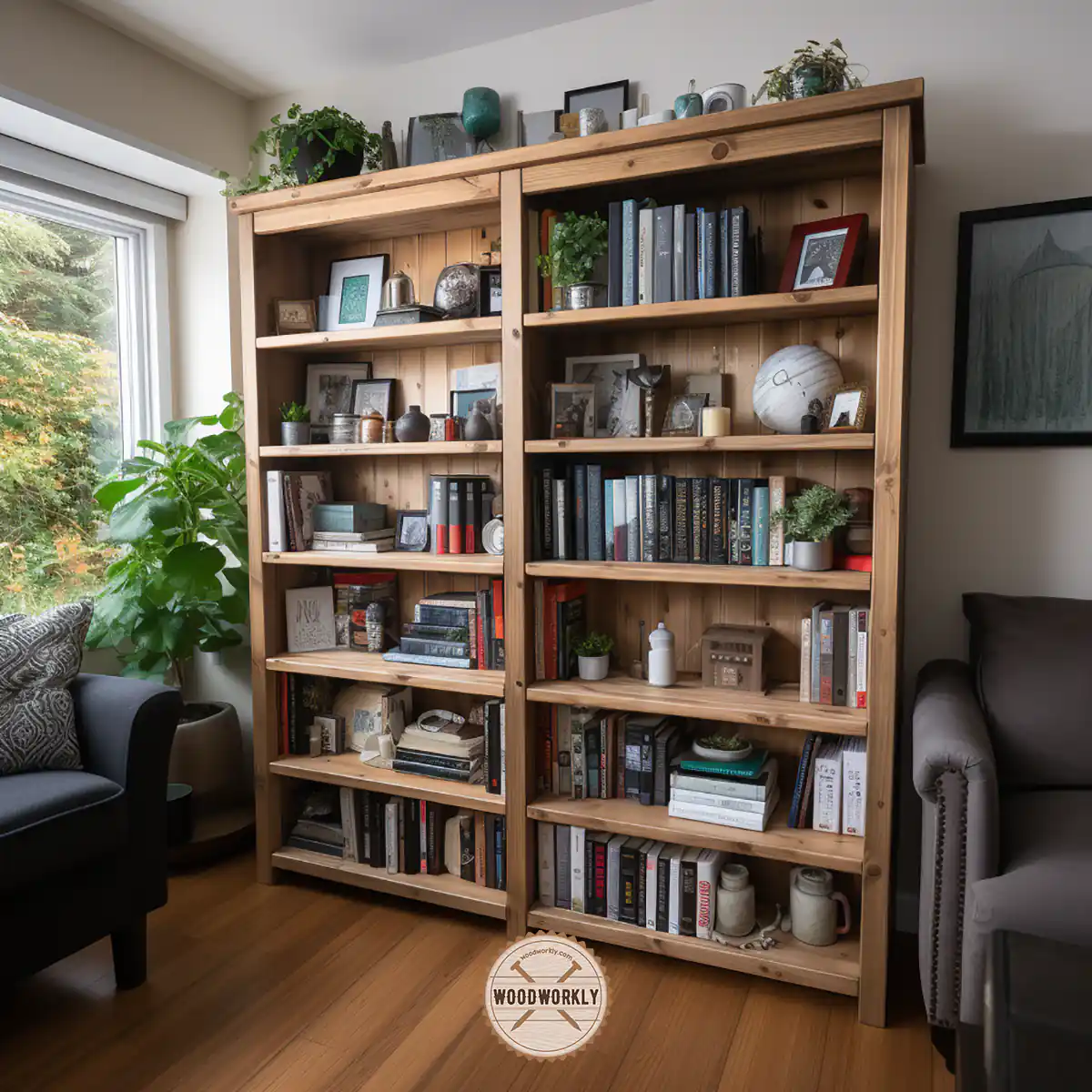
Hardness Of Douglas Fir Compared to Other Woods
Here’re the hardness ratings of other popular woods to get an idea about how hard Douglas Fir is compared to other wood types.
| Wood species | Hardness value |
| Brazilian Walnut | 3,684 lbf (16,390 N) |
| Red Mahogany, Turpentine | 2,697 lbf (12,000 N) |
| Brazilian Cherry, Jatoba | 2,350 lbf (10,500 N) |
| Golden Teak | 2,330 lbf (10,400 N) |
| Hickory, Pecan, Satinwood | 1,820 lbf (8,100 N) |
| Hard Maple, Sugar Maple | 1,450 lbf (6,400 N) |
| White Oak | 1,360 lbf (6,000 N) |
| Ash (White) | 1,320 lbf (5,900 N) |
| American Beech | 1,300 lbf (5,800 N) |
| Red Oak (Northern) | 1,290 lbf (5,700 N) |
| Yellow Birch / Baltic birch | 1,260 lbf (5,600 N) |
| Teak | 1,155 lbf (5,140 N) |
| Black Walnut, North American Walnut | 1,010 lbf (4,500 N) |
| Cherry | 995 lbf (4,430 N) |
| Black Cherry, Imbuia | 950 lbf (4,200 N) |
| Red Maple | 950 lbf (4,200 N) |
| Douglas Fir | 710 lbf (3,158 N) |
| Silver Maple | 700 lbf (3,100 N) |
| Hemlock | 540 lbf (2,402 N) |
| Black Spruce | 520 lbf (2,313 N) |
| Sitka Spruce | 510 lbf (2,268 N) |
| Cypress | 510 lbf (2,268 N) |
| White Spruce | 480 lbf (2,135 N) |
| Redwood | 420 lbf (1,868 N) |
| Engelmann Spruce | 390 lbf (1,735 N) |
| Sugar Pine | 380 lbf (1,690 N) |
As you can see Douglas Fir has an average hardness rating compared to other softwoods.
It is a versatile hardwood species with lots of great qualities that can use for both indoor and outdoor woodworking projects.
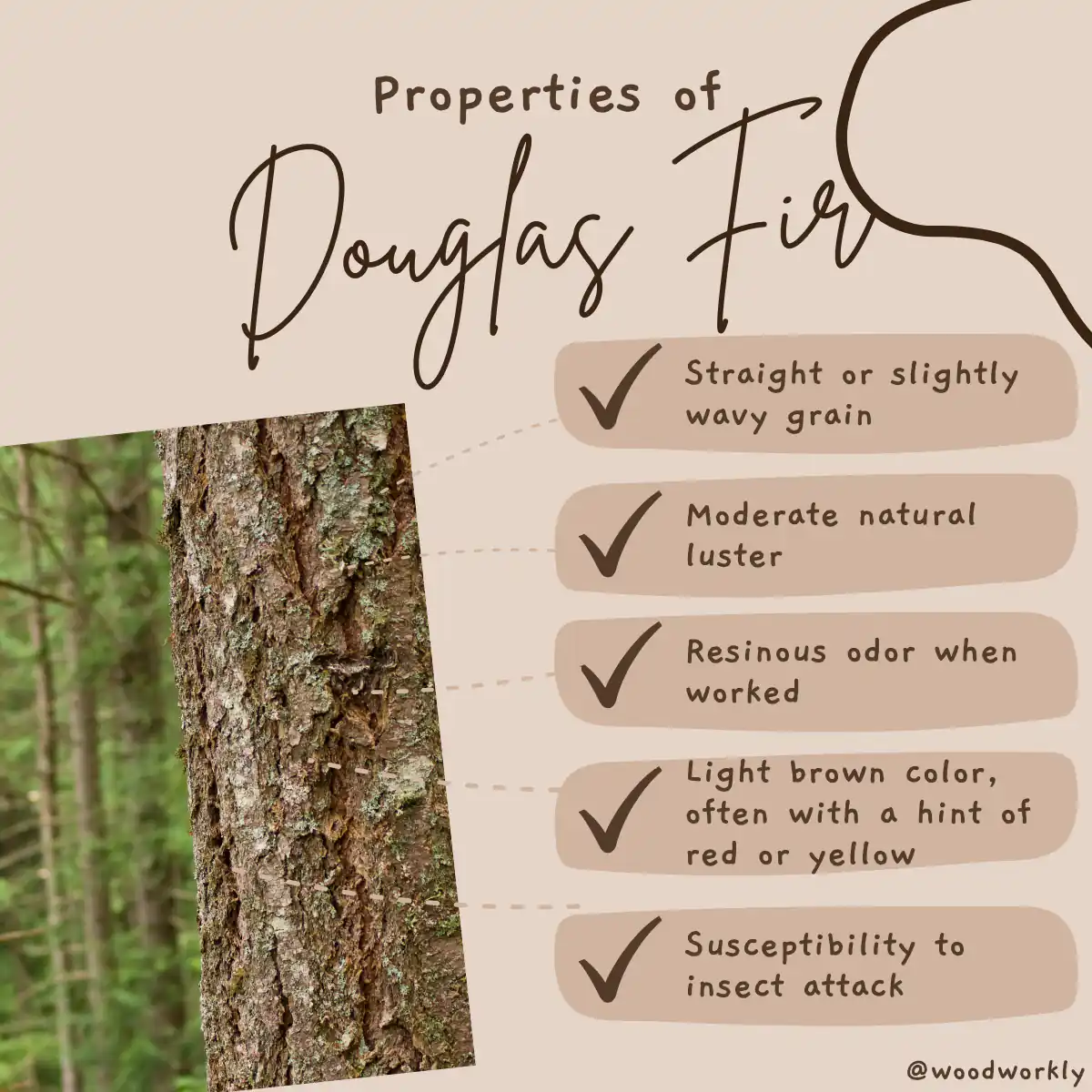
So, let’s have a look at the characteristic properties of Douglas Fir to overcome lower hardness and become one of the superior wood types on the planet.
Douglas Fir Characteristics
Douglas Fir is a light brown color wood that varies in color based on its age.
It has straight grain or slightly wavy grain pattern with coarse to medium texture that adds a unique appearance to the wood.
Douglas Fir is equipped with small to medium resin canals that are distributed variably. The workability of Douglas Fir is also interesting.
But it has a blunting effect on the cutter. Therefore, if you’re a beginner in woodworking better to have a good practice before working on a woodworking project with Douglas Fir.
When working with Douglas Fir better to open all the windows in the room because it has a distinct resinous odor that can occur breathing problems.
Overall, Douglas Fir is an effective wood that can be used for veneer, plywood, and other construction projects due to its great characteristic features.
Douglas Fir is popular because of its strength and versatility. In summary here’re the most significant qualities of Douglas Fir,
- Lightweight
- Softwood
- Poor rot resistance
- Moderate workability
- Distinct odor
- Excellent nail holding ability
The above qualities make Douglas Fir important to get an idea about its woodworking applications.
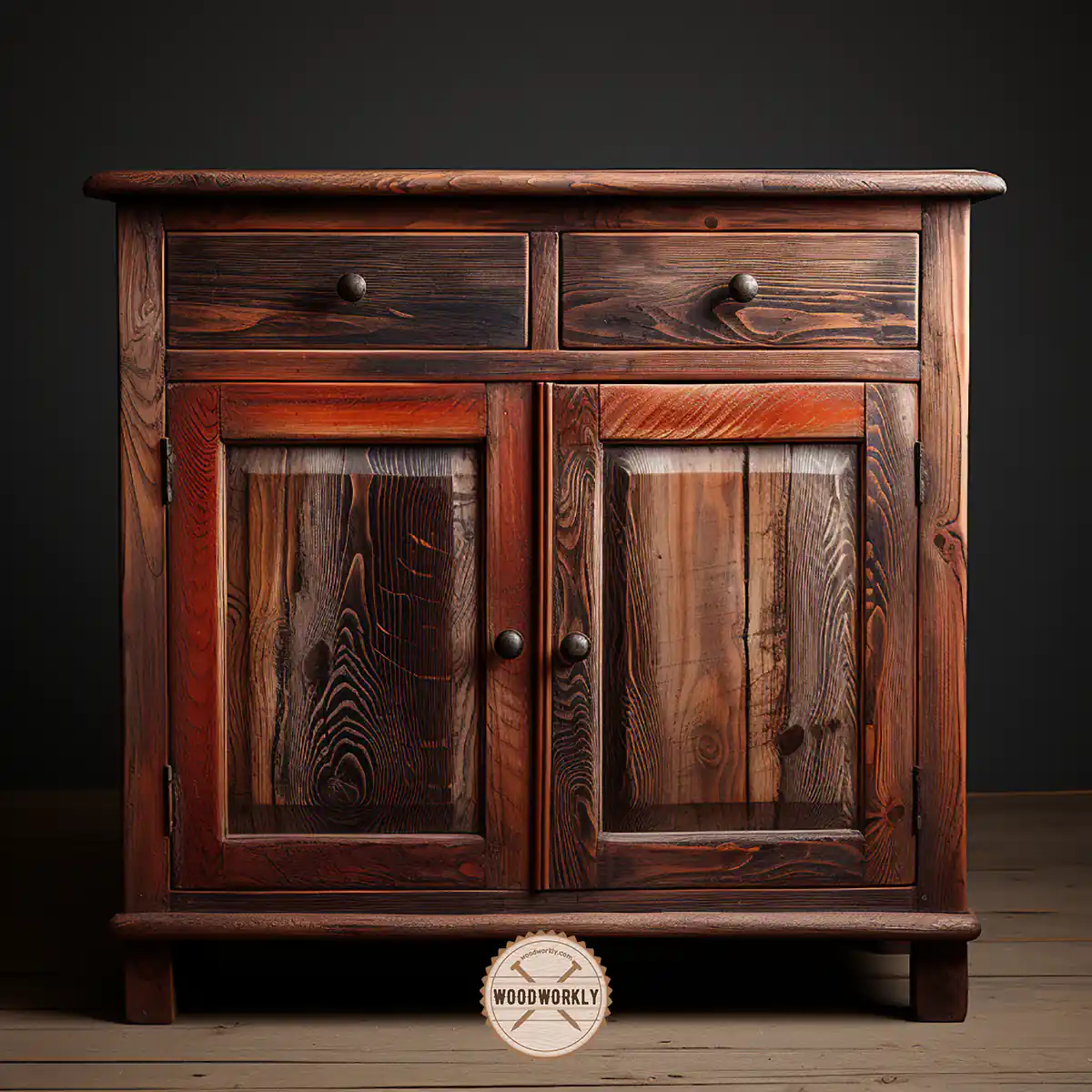
Properties Of Douglas Fir
Here’re the main characteristic features of Douglas Fir.
| Color | Light brown with a red hint |
| Density | 0.49 Kg/m3 |
| Hardness | 710 lbf (1,358 N) |
| Stiffness | 1.95 Mpsi |
| Wood Type | North American Softwood |
| Applications | Lumber, Plywood, Veneer |
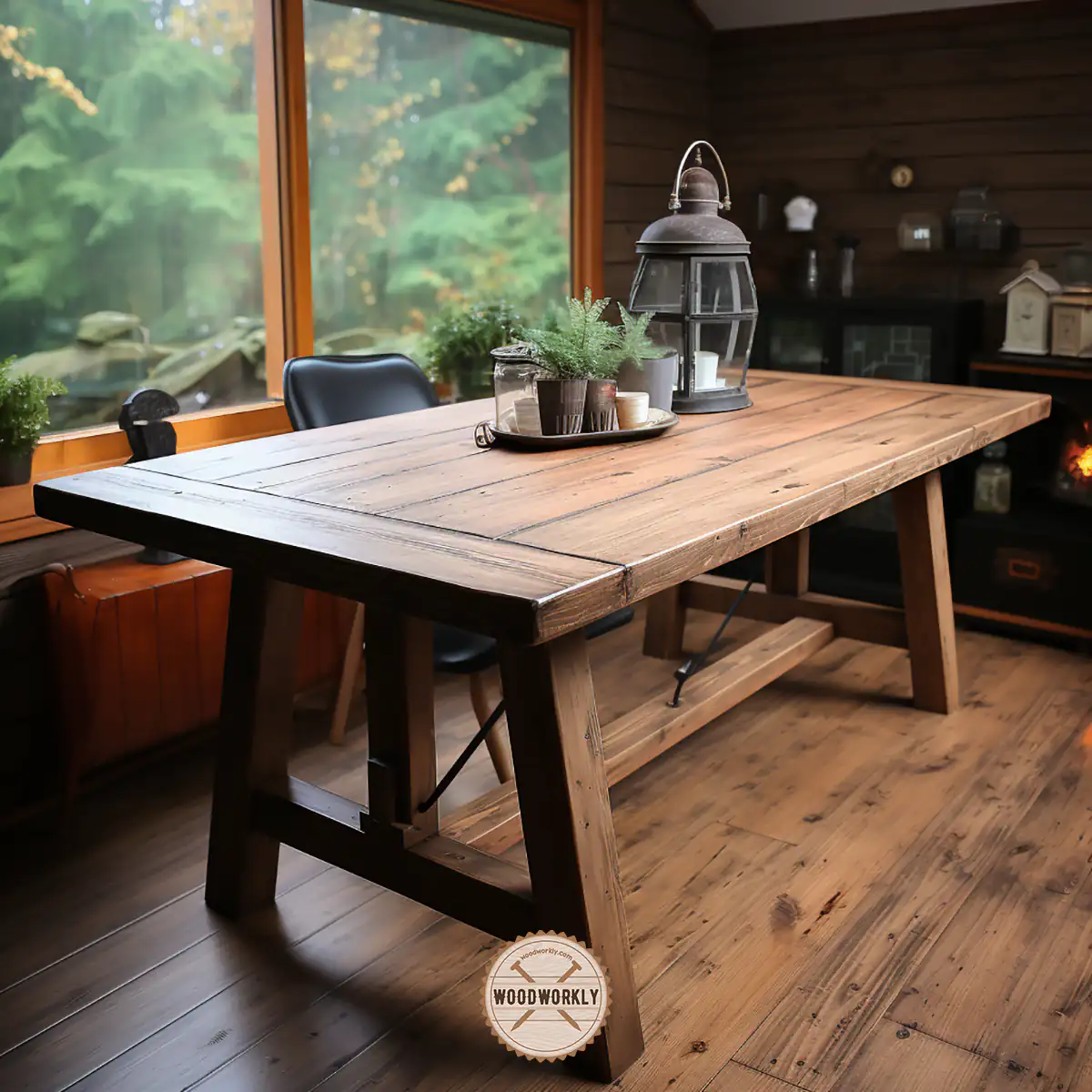
So, let’s find out what are the uses of Douglas Fir as a softwood.
What Is Douglas Fir Used For?
Here’re the main uses of Douglas fir wood,
- Flooring
- Boatbuilding
- Aircrafts
- Doors
- Window frames
- Beds
- Tables
- Plywood
- Decking
- Railroad ties
- Other furniture
As you can see even though Douglas Fir is considered a softwood, it is so versatile that can use pretty much for any woodworking project with proper care and maintenance.
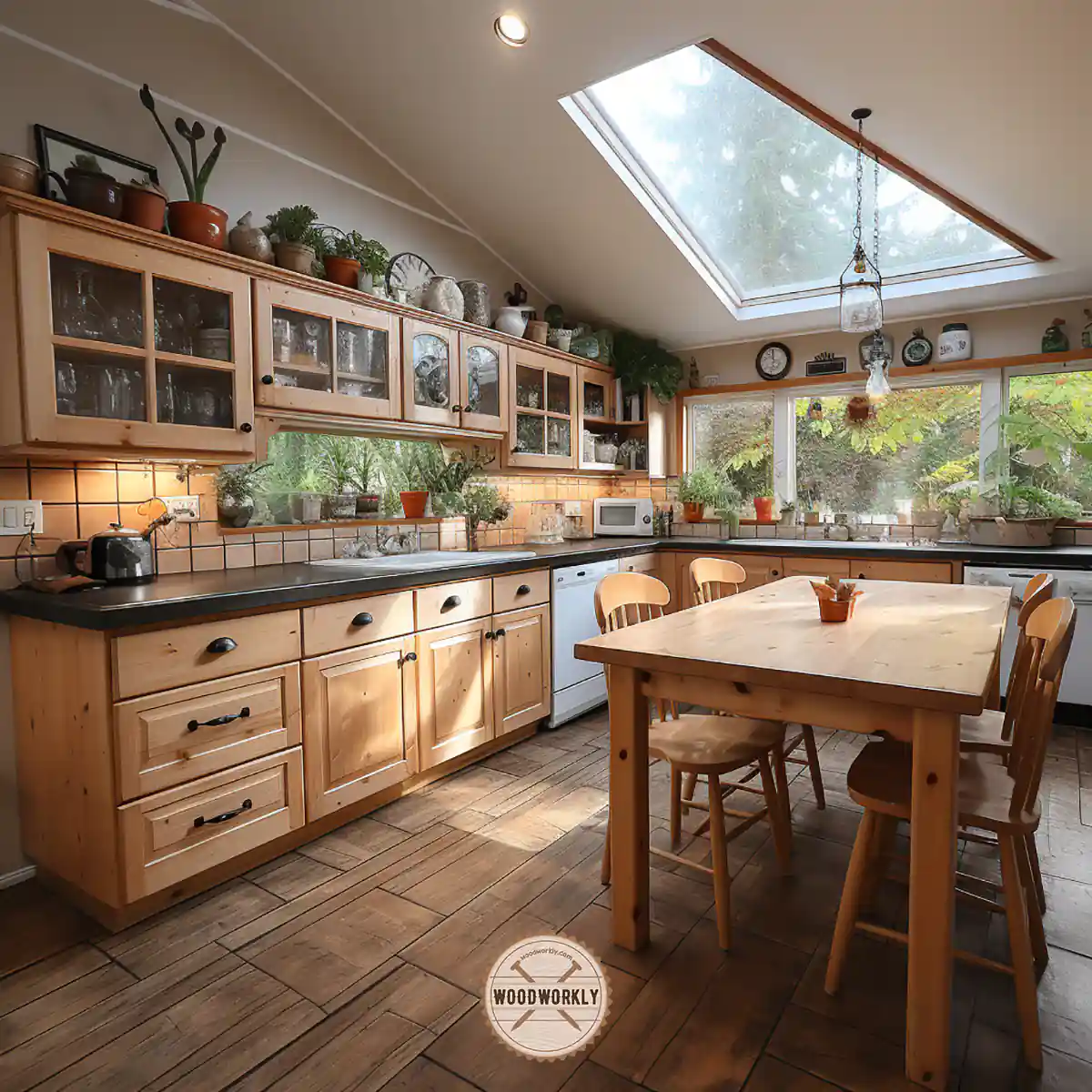
How Strong Is Douglas Fir?
Douglas Fir is considered one of the strongest softwoods on the planet. The compressive strength and bending strength of Douglas Fir are significantly higher than most other popular softwoods.
The compressive strength and bending strengths of Douglas Fir are listed as follows,
- The compressive strength of Douglas Fir is 7,230 psi
- The bending strength of Douglas Fir is 12,400 psi
Douglas Fir can bear a high amount of force when it is stretched. Plus, it is lightweight. Therefore, Douglas Fir has superior strength-to-weight ratio.
Douglas Fir is equipped with strong fibers that make it resistant to physical impacts. This is why Douglas Fir is popular in heavy-duty flooring due to its good resistance and high strength.
Because of having high bending strength Douglas Fir is used as a boat-building material. Plus, it has good dimensional stability as well.
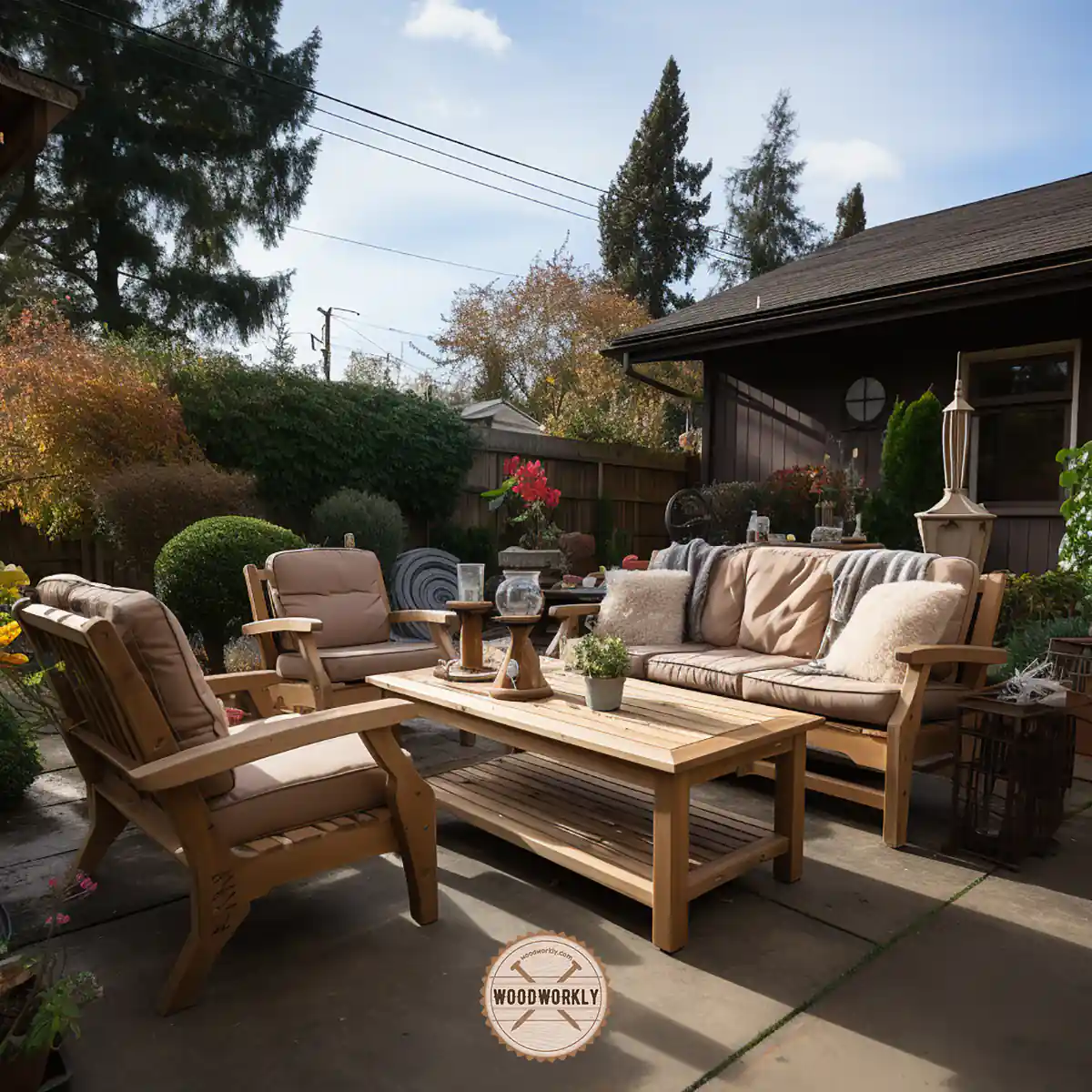
Pros and Cons OF Douglas Fir as a Softwood
| Pros | Cons |
| Versatile | Poor rot resistance |
| Lightweight | Poor hardness |
| High strength to weight ratio | Poor durability |
| High flexibility | Prone to insect attacks |
| Affordable | Need high maintenance |
| Chemical-free | |
| Decay resistant |
As you can see advantages of Douglas Fir are so much higher than its disadvantages. As a softwood, Douglas Fir is versatile wood.
Most of the disadvantages of Douglas Fir can easily solve with proper finishing and staining techniques.
Read to know How to stain and finish Douglas Fir!
Now I’m going to share with you some tips that are useful when working with Douglas fir which I have leaned by experience.
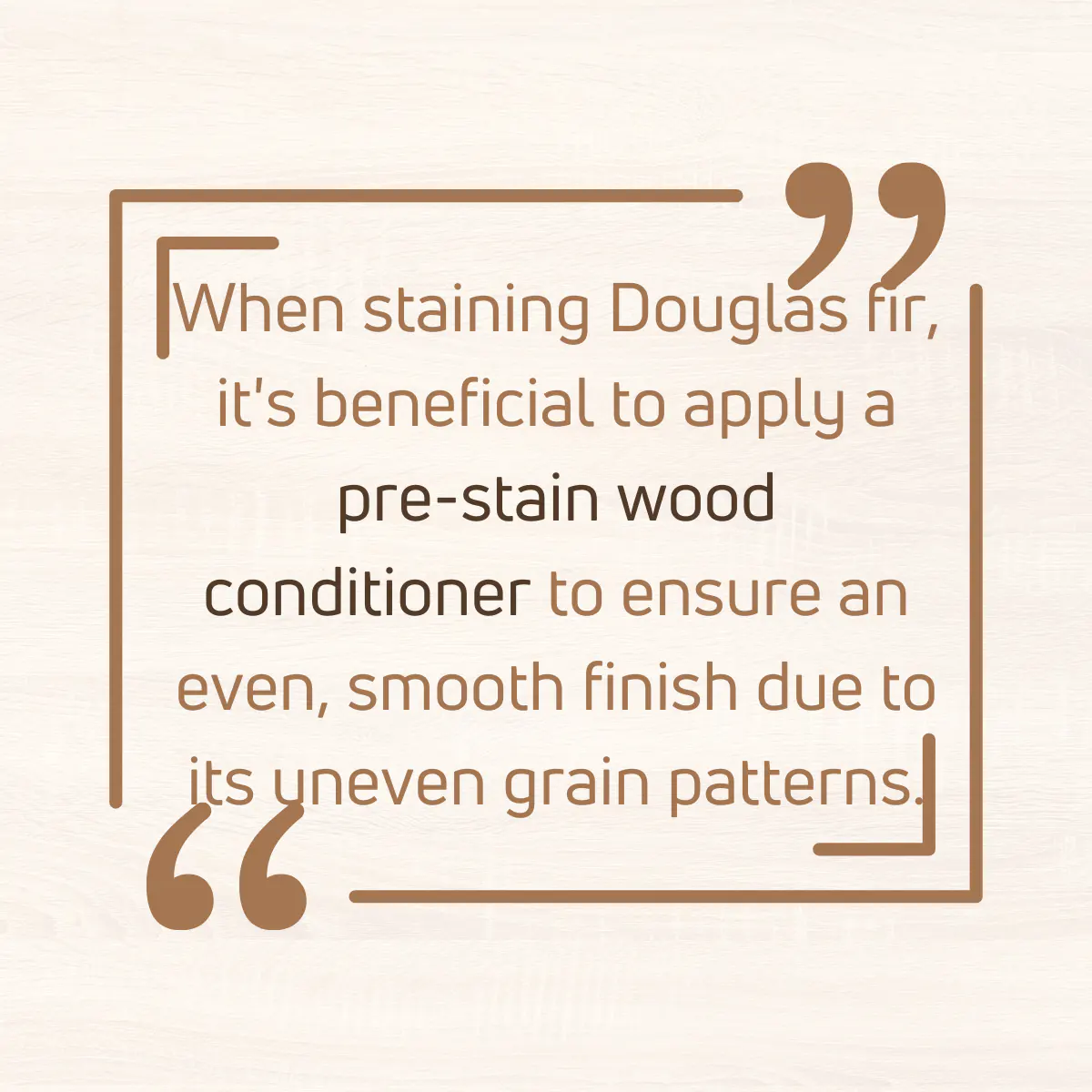
Tips For Working With Douglas Fir Softwood
As one of the most commonly used and widely available types of wood, Douglas Fir offers some unique advantages, such as its strength, hardness, and stability.
However, working with Douglas Fir also comes with its own set of challenges.
Here are some tips to help you handle this beautiful, durable, and resilient wood effectively and safely.
Tool Sharpness is Key
When machining Douglas Fir, ensure your tools are sharp.
This softwood species is known for its moderate blunting effect on cutters.
Dull blades or bits can cause tear-outs or rough edges, compromising the quality of your finished product.
Keeping your tools in tip-top shape ensures a clean, precise cut every time.
Be Cautious of the Resinous Odor
Douglas Fir emits a distinct, resinous odor when worked. While it can be quite aromatic and appealing to some, it can also cause discomfort to others, potentially leading to skin irritation, nausea, or giddiness.
Always ensure that your workspace is well-ventilated, especially if you’re planning a long day of woodworking.
And don’t forget your personal protective equipment (PPE), such as a dust mask and safety goggles.
Mind the Grain
While Douglas Fir generally has a straight grain, it can sometimes be slightly wavy, especially in flatsawn pieces.
Pay close attention to the grain direction when you’re working to minimize the risk of tear-out.
The right technique here can also bring out the best of Douglas Fir’s natural beauty, highlighting its unique grain patterns.
Perfecting the Finish
Douglas Fir accepts stains, glues, and finishes well. Feel free to experiment with different finishing options to achieve the desired look.
Always test your finish on a scrap piece first to see how it will react.
Some types of Douglas Fir, especially older or denser samples, might require a pre-stain wood conditioner to help achieve a uniform finish.
Insect Protection
While Douglas Fir heartwood is moderately resistant to decay, it can be susceptible to insect attacks.
If you plan on using your Douglas Fir creation outdoors or in a location prone to insects, consider applying an appropriate insect-resistant finish or treatment to help protect your project.
Splinter Care
One notable feature of Douglas Fir is that splinters from this wood have an increased likelihood of causing infections.
Therefore, it’s crucial to handle this wood with care.
Wearing appropriate safety gear, such as gloves, can minimize the risk of splinters.
Working with Douglas Fir is a rewarding experience, thanks to its versatility, durability, and unique aesthetic qualities.

So, let’s compare the hardness of Douglas fir with some other popular wood types.
Is Douglas for Harder Than Pine?
Douglas Fir is harder than Sugar Pine and White Pine. But Douglas Fir is not harder than Yellow Pine.
Both kinds of wood are softwoods, but Douglas Fir is softer than Yellow Pine.
According to the Janka hardness test values, the hardness of Douglas Fir is higher than Sugar Pine, and White Pine but lower than Yellow Pine.
Here is the comparison between Douglas Fir and Pinewoods in terms of their hardness.
| Wood Type | Hardness |
| Douglas Fir | 710 lbf (3,158 N) |
| Sugar Pine | 380 lbf (1,690 N) |
| White Pine | 420 lbf (1,868 N) |
| Yellow Pine | 870 lbf (3,870 N) |
Is Douglas Fir Harder Than Spruce?
Douglas Fir is harder than Spruce. Both are softwoods.
According to the Janka hardness test values, the hardnesses of Douglas Fir and Spruce are as follows,
| Wood Type | Hardness |
| Douglas Fir | 710 lbf (3,158 N) |
| Black Spruce | 520 lbf (2,313 N) |
| Red Spruce | 490 lbf (2,180 N) |
| White Spruce | 480 lbf (2,135 N) |

Is Douglas Fir Harder Than Oak?
Oak is harder than Douglas Fir. Oak is hardwood and Douglas Fir is softwood.
Therefore, in terms of hardness, Douglas Fir is no way near to the hardness of oak wood. Oak is harder, stronger, and denser than Douglas Fir.
According to the Janka hardness values, the hardness of oak and Douglas Fir is as follows,
| Wood Type | Hardness |
| Douglas Fir | 710 lbf (3,158 N) |
| Red Oak | 1,290 lbf (5,738 N) |
| White Oak | 1,360 lbf (6,050 N) |
Congrats folks! Now you know whether is Douglas fir a hardwood or softwood with its characteristic features.

So, let’s answer some frequently asked questions.
FAQs
Can Douglas Fir be used for furniture?
Yes, the strength and attractive grain of Douglas Fir make it suitable for furniture, though its relatively high splinter risk and moderate blunting effect on tools should be considered.
Is Douglas Fir resistant to rot and insects?
Douglas Fir heartwood is rated as moderately durable in regard to decay, but it is susceptible to insect attacks, so it might need appropriate treatments when used outdoors.
What kind of odor does Douglas Fir have when being worked?
Douglas Fir emits a distinct, resinous odor when being worked, which some find appealing but can cause discomfort or irritation to others.
Is Douglas Fir an environmentally sustainable choice of wood?
Yes, Douglas Fir is reported by the IUCN as being a species of least concern and it’s not listed in the CITES Appendices, making it a relatively sustainable choice of wood.
Did I cover all you wanted to know about: Is Douglas Fir A Hardwood?
In this article, I have deeply discussed is Douglas Fir a hardwood, and how hard it is.
We have discussed the characteristic qualities of Douglas Fir and what makes it so special and unique compared to other popular wood types as well.
The uses and pros, and cons of Douglas Fir are so useful to get an idea about how versatile Douglas Fir is.
Douglas Fir, despite its hardness and durability, is technically a softwood, not a hardwood. The classification is based on its botanical family, not its physical hardness. It’s one of the hardest and heaviest softwoods, but it’s still softer than most hardwoods.
Furthermore, we’ve answered some frequently asked questions about Douglas Fir in terms of its hardness.
Hope you have gained good knowledge about is Douglas Fir a hardwood by considering its great qualities as a softwood.
So, let’s begin your next woodworking project with Douglas Fir. Have fun in woodworking!